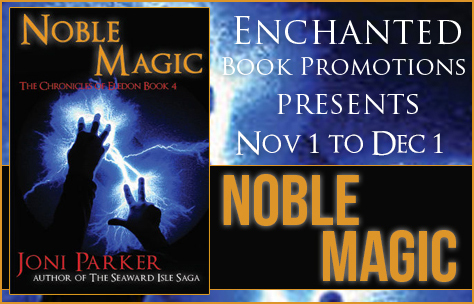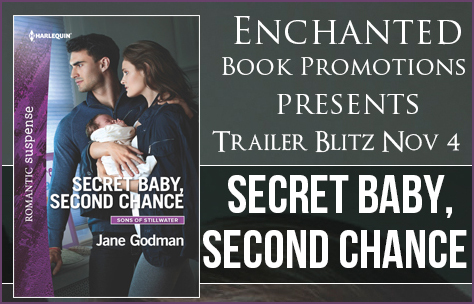Majanka Verstraete's Blog, page 28
November 15, 2017
NaNoWriMo Week 3 – What If You’re Stuck?
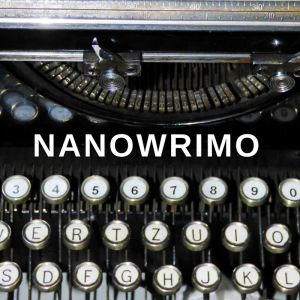 It’s NaNoWriMo Week 3 and chances are high that you’re either still going strong, typing up those words, adding those subplots and racing toward the end… or you’re stuck. Utterly and completely stuck.
It’s NaNoWriMo Week 3 and chances are high that you’re either still going strong, typing up those words, adding those subplots and racing toward the end… or you’re stuck. Utterly and completely stuck.
Well, no worries, I’m here to help. Here are some tips and tricks that I’ve used myself every time I felt like I got stuck in a novel.
Are you stuck because you can’t decide?
Sometimes you’re stuck simply because you can’t decide. You have to make a decision in your book and that decision is so daunting you don’t know if you can make it. For example, in “The Soul Thief,” I had to choose whether two characters would kiss in the book or not, and I really struggled with it. Eventually, I made a choice, but it took me several weeks just to make that choice.
If you already have an outline, it might help you not to bump into this obstacle. If you don’t, it could be helpful to make an outline, and then to look at the path your protagonist still has to make before he/she meets their end goals. Then, ask yourself: what decision should I make now that will ultimately bring the main character closer to their end goal? Decide with that in the back of your mind, and it’ll be easier for you to make a decision.
2. Look at the plot from one of your character’s point of view
This sounds a little strange, but I’ve actually done it before and for me, it worked. Try looking at the plot from your character’s point of view. This could be your main character but it could also be one of the supporting cast members. If there’s a conflict you can’t resolve, or a situation you can’t decide on, try putting yourself in a certain character’s shoes and see if he/she can come up with a solution.
You know that saying that sometimes if you look at something from a different viewpoint, using a different set of eyes, you might get a better understanding of the situation? Well, this is exactly that.
3. Add a plot twist
If you’re stuck, it might just be because your story is too boring. Especially in the middle of a book, if there aren’t enough subplots, supporting characters, or not enough tension and drama, your plot might just seem too boring. If everything is going great and everyone is happy, then obviously you’ll have a hard time as a writer because that’s obviously dreadfully boring to write about.
So, add a plot twist. Add a subplot. Add a larger supporting cast (although try not to make it too large, or you’ll be in trouble too). Spice up your plot. Subplots are strange creatures. They can actually add energy to the main plot, give a reader a different angle to look at the main plot and ultimately make a main plot even more interesting than it already is.
Plot twists do the same. If a reader thinks something is going to end up a certain way and then it doesn’t, that recharges the book’s energy and makes the reader long to go back to the main plot and find out more about it.
4. Re-activate your hero
Another reason why your plot could be in a slump is because your hero is too passive. Passive heroes are dreadful. If everything keeps happening to the hero and they don’t really respond to it, they just let it happen, then they’re just being boring, and no one likes a boring hero.
Let your hero grab the plot and kick it. Let your hero make decisions to move the plot along. Re-activate your hero.
5. Raise the stakes
Your story might also seem to drag, and you might also be stuck because the stakes simply aren’t high enough. If your main character’s end goal is to win a football competition at the end of the book, consider if this is the highest your stakes can go. Maybe if he/she doesn’t win, he/she will lose a scholarship. Or his/her parents’ approval. Or their boyfriend/girlfriend will not want to date them anymore. Raise the stakes and your plot will be stronger, and rather than drag along, it will speed ahead.
We’re halfway! If you’re stuck in your story, I hope some of my tips helped you. Good luck, and race you to the finish line.
Book Release: Framed
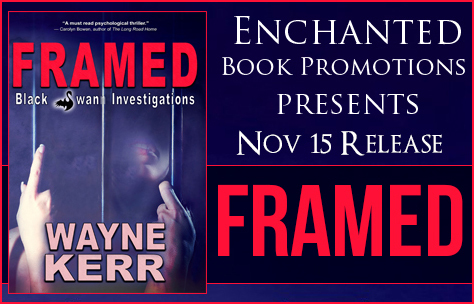
About the Book
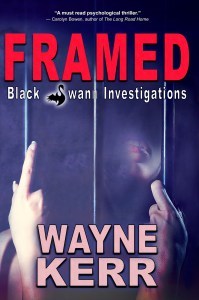 Title: Framed – A Black Swann Investigation
Title: Framed – A Black Swann Investigation
Author: Wayne Kerr
Genre: Mystery / Thriller
Toronto’s newest homicide detective, Reggie Swann, seemed to have it all: great career, handsome husband and plans to start a family, until she was framed for murder…
A cop has very few friends in prison. After surviving ten brutal years behind bars, Reggie’s conviction is finally overturned thanks to her tenacious mother, a new forensic test and a very clever lawyer. She quickly discovers that getting her old life back won’t be as easy as she hoped. To many, she was still as the media had dubbed her: ‘Black Swann – murderer and cop-gone-bad’. The Toronto Police Department still considers her to be a suspect, Reggie’s husband has remarried and the real killer is still on the loose.
Before Reggie can return to Toronto and solve the crime that ruined her life, she reluctantly agrees to investigate a murder in her home town of Penticton, only to discover the two cases which are separated by ten years and five provinces might somehow be connected. Will anyone believe the wild theories of the disgraced detective?
The real murderer does. He framed her once, this time Reggie Swann must die!
Author Bio
 Canadian author, Wayne Kerr, was born and raised in the small town of Biggar, Saskatchewan (New York is big, but this is Biggar). He married his high school sweetheart, Marlene, thirty-nine years ago and has lived happily ever since. They resided in the United States for the past twenty years, but recently returned to Canada and now call the beautiful Okanagan region of British Columbia home. The writer honed his story-telling skills while keeping his five younger siblings and later his daughter entertained during long cold winters. When not reading or writing thrillers, Wayne is probably hiking, biking or playing tennis.
Canadian author, Wayne Kerr, was born and raised in the small town of Biggar, Saskatchewan (New York is big, but this is Biggar). He married his high school sweetheart, Marlene, thirty-nine years ago and has lived happily ever since. They resided in the United States for the past twenty years, but recently returned to Canada and now call the beautiful Okanagan region of British Columbia home. The writer honed his story-telling skills while keeping his five younger siblings and later his daughter entertained during long cold winters. When not reading or writing thrillers, Wayne is probably hiking, biking or playing tennis.
For more information on the author and his books please visit: waynekerrnovels.com or follow him on twitter: @waynekerrnovels
Links
website: waynekerrnovels.com
twitter: @waynkerrnovels
Amazon :https://goo.gl/qQonNw
November 12, 2017
Ghost Slayer is on Tour!
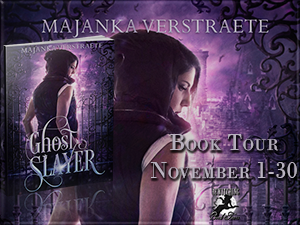 Ghost Slayer, my NA paranormal romance releasing in April 2018, is on tour! It’s touring with Bewitching Book Tours, and the tour runs from November 1 to November 30.
Ghost Slayer, my NA paranormal romance releasing in April 2018, is on tour! It’s touring with Bewitching Book Tours, and the tour runs from November 1 to November 30.
The link to the post on Bewitching Book Tours is here.
And here is the tour schedule. Thank you so much to all the people hosting the tour for my book. It means a lot.
November 1 Ramblings of a Book Nerd
November 2 BTH Reviews
http://bthreviews.com
November 3 Authors’ Secrets
http://www.tenastetler.com/category/authors-secrets-blog/
November 3 Share My Destiny
http://sharemydestiny.blogspot.com
November 6 Vicky at Deal Sharing Aunt
www.dealsharingaunt.blogspot.com
November 6 Eskimo Princess Book Reviews
http://eskimoprincess.blogspot.com/
November 7 Teatime and Books
http://www.teatimeandbooks76.blogspot.com
November 7 Marianne Willis
https://mariannewillis.wixsite.com/author
November 8 Megan Morgan
http://www.meganmorganauthor.com/blog
November 8 Full Moon Bites
http://www.full-moon-bites.com
November 9 Saph’s Books
https://saphsbooks.blogspot.com/
November 10 Urban Fantasy Investigations
http://urbanfantasyinvestigations.blogspot.com/
November 13 Am Kinda Busy Reading
November 14 Books Direct
http://booksdirectonline.blogspot.com
November 15 I Smell Sheep
November 16 CBY Book Club
https://cbybookclub.blogspot.com/
November 17 Traci Douglass
November 20 The Book Junkie Reads
https://thebookjunkiereadspromos.blogspot.com/
November 213 Partners in Shopping, Nana, Mommy, and Sissy, Too!
http://3partnersinshopping.blogspot.com
November 22 Reads 2 Love
November 23 Paranormal Romance and More
https://paranormalfantasyandmore.blogspot.com/
November 24 Brayton’s Briefs
https://stephenbrayton.wordpress.com
November 27 Jena Baxter’s Bookworms
https://jbbookworms.blogspot.com/
November 28 Butterfly-o-Meter Books
November 29 Shh, I am Reading
https://shhiamreading.wordpress.com
November 30 Marsha A Moore
http://marshaamoore.blogspot.com
November 30 T’s Stuff
http://teresanoel.blogspot.com/
Bewaren
Bewaren
Bewaren
November 9, 2017
Author Interview with Lucas Aubrey Paynter
When did you know you wanted to be an author?
I don’t recall when I settled on being an author as a specific identifier, but I long wanted to be a writer. I just enjoy the creative process in general, thinking up (what I believe to be, at least) interest characters, encounters and ideas.
Of course, thinking those things up is the easy part. The writing is where the work comes in.
What inspired you to write this book?
As it was originally the second half of my first book, Outcasts of the Worlds, many of the core ideas were already laid down. That said, there were thematic elements woven in that wouldn’t have been there if this had been in the first novel as planned.
In the basest example I can offer, the prologue is title “All Good People,” and the takeaway is that maybe self-proclaimed good people are the ones you should be more wary of. This might sound a little contrarion to how we’re taught to view the world and how people often view themselves, but it was an idea that rolled in my head for a while, and one I ultimately used to set the tone.
What is your editing process like?
Kinda all over the place. Generally, after I write a scene, I’ll return to it the next time before I set down, before moving on. This is both to get back into the groove of things, as well as clean it up a little. This is when things go smoothly.
When things are, generally when I get locked up at a point in the story, I’ll go back to the very beginning, reread everything, and often end up redrafting some scenes completely from scratch. In the case of KT&R, I excised one segment (and a character who appeared in it) entirely, as while I liked it, the story could do fine without it.
But, yeah, once I’ve finished rereading everything, I tend to figure out either where things started going wrong, or how I want to proceed.
Was writing this book harder or easier than writing your first book? In what way(s) was it different?
The answer to your first question is ‘yes.’ It was both.
The circumstances behind KT&R were vastly different. When I wrote Book I, I’d done a lot of writing, but never wrote a book before. The first chapter was redrafted more than anything I’ve ever done in my life, and I was getting a bit of feel for the form and structure I wanted to use.
There were also a number of formatting issues when working with my editor that made the process to clean up the text a lot harder—things I learned from and integrated into Book II from the get-go. In terms of sheer composition, just knowing how to present things made work on Book II much easier, when it came to the back-end of the process.
As for the harder, there were two things: the first was just real life, as I was stuck in a stressful business deal that was going really bad for the stupidest reasons, and I couldn’t get enough room to focus on the story. I had to take a break for a month and a half because I just couldn’t write.
The second was on me, which actually comes back to the editing process above. A much older and rawer draft of this story exists that I’ve been using as a template for these first two books. There are parts I’ve really liked that I’ve tried to keep in, that had become incompatible owing to how my writing style has evolved. The broad outline is still reflected in the final text, but I needed to distance myself from the minutea, and things started getting much better (and easier) once I did.
Did you set any writing goals for 2017?
Well, I’d have loved to finish Book III, but that wasn’t going to happen. I meant to have KT&R out a while ago, actually. It was virtually done, but little things kept happening and I only decided recently to just lock in a date and get it out there.
Are you working on something now?
The aforementioned Book III, Into Darker Hearts. There are hearts. And they are darker.
About the Book
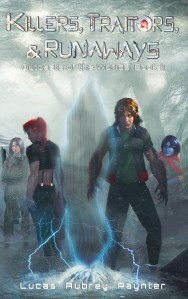 Title: Killers, Traitors & Runaways (Outcasts of the World II)
Title: Killers, Traitors & Runaways (Outcasts of the World II)
Author: Lucas Aubrey Paynter
Genre: Cosmic Fantasy
As reality nears its final days, worlds fall to ruin. A benevolent god is shackled, and when freed, will create a new one … allowing only the pure of heart. A company of seven have united on a bloody quest to stop him, but have little hope of emerging victorious.
The outcasts are adrift—they have a mission but no means to fulfill it. Airia Rousow, the fallen goddess who set them on their path, is gone. Guardian Poe, her intended successor, believes deification will absolve him of his sins and his remorse alike. And Zella Renivar, daughter of the Living God, is still hunted by her father’s agents, drawing danger on them all.
Trapped in this storm, Flynn is able to find and open the ways between worlds, but cannot discern which path is the right one. Since losing the trust of his closest friend, the temptation to fall back on his former, deceitful ways grows with every crisis he faces.
These are heroes not of virtue, but of circumstance—and it will fall on Flynn to keep them all together.
Author Bio
 Lucas Aubrey Paynter hails from the mythical land of Burbank, California, where there are most likely no other writers at all.
Lucas Aubrey Paynter hails from the mythical land of Burbank, California, where there are most likely no other writers at all.
Back in 2014, he published Outcasts of the Worlds, and he’s now releasing its follow-up, Killers, Traitors, & Runaways.
A fan of gray-area storytelling and often a devil’s advocate, Lucas enjoys consuming stories from a variety of mediums, believing there’s no limit to what form a good narrative can take.
Links
Website: http://www.lucaspaynter.com/
https://www.facebook.com/lucas.paynter
https://www.facebook.com/outcastsoftheworlds/
https://twitter.com/OutcastsWorlds
November 8, 2017
NaNoWriMo Week 2 – Middle of the Book Syndrome
 It’s NaNoWriMo Week 2 which means that, if you’re still on track, you’re now reaching the dreaded middle part of your book. I don’t know about you, but I hate writing the middle part of a book. It seems like I magically make it to 20,000 words, then I panic, the plot fails, the characters abandon me, and I know where I want to be at when I’m at 50,000 or 60,000 words, but I have no idea how to fill in the middle part of the book. Or even worse, I know how to fill it in, I just can’t get the words on the page.
It’s NaNoWriMo Week 2 which means that, if you’re still on track, you’re now reaching the dreaded middle part of your book. I don’t know about you, but I hate writing the middle part of a book. It seems like I magically make it to 20,000 words, then I panic, the plot fails, the characters abandon me, and I know where I want to be at when I’m at 50,000 or 60,000 words, but I have no idea how to fill in the middle part of the book. Or even worse, I know how to fill it in, I just can’t get the words on the page.
If you’re not suffering from this mysterious illness where you dread writing the middle part of a book so much you start to worry you might never make it to the end, congratulations. But for most of us regular folk who struggle from middle-of-the-book-syndrome, here are some helpful tips to get through it (mostly) alive.
Outline, outline, outline
I’ve said it before but when you have an outline that is strong enough that you can hold on to it when things get tough during writing, then your outline is your lifeline. You don’t know what will happen next? Your outline knows. You lose track of where you’re supposed to be headed when writing your plot? Your outline knows.
Trouble staying focused on your character’s end goals? Check the outline.
For Marisol Holmes, most of my middle arc relied on building up tension and trying to solve the mystery, it involved dropping clues about the mystery and meanwhile showing off minor characters. It was, as it’s with most of my books, the hardest part to write (in comparison, I find it much easier to write the ending of a book, or the beginning) but it’s where the character develop, where we get minor resolutions, where the reader gets to connect with the characters. Don’t rush through the middle of your book, but polish it until it shines…except not in NaNoWriMo, where time is off the essence. Here you can rush, rush, rush, just make sure it still works.
2. Add minor subplots and find resolutions for them
You can fleshen up your middle part of the book by adding minor subplots and preferably, also giving resolutions/endings to these minor subplots. For example, if a minor subplot of your book is that characters A and B are fighting over something stupid, you can have them resolve their argument in the middle part of your book, so that is out of the way for the grand finale.
In “A Study in Shifters”, my subplots mostly included character relationships, Marisol finding clues and trying to connect the dots of the case she was working on.
3. Add minor characters
This is especially important if you’re writing a series but works for a single book as well. There’s no use introducing all of your characters right at the start of the book. You can keep the introduction of minor characters for the middle part of your book.
4. Raise uncertainty about your character’s goals
Another often-used plot device is to raise uncertainty about your character’s goals. Take a romance book for example – in the beginning the characters meet or if they’re already in love, everything is going fine. The middle part of the book is used to build tension, and is usually the part where the characters are driven apart, and in the end, they usually get together again.
For Marisol Holmes, solving the case seems daunting in the middle part of the book, nearly impossible. The reader might start to wonder if she’s ever going to solve the case at all, thus doubting the character’s goals.
5. Add plot obstacles
When it’s easy for your protagonist to get from the beginning to the end of your book, to reach their goals without much trouble, then your book won’t be very exciting. Instead, use the middle part of your book to add minor plot obstacles. This could be things like misunderstandings between characters, physical obstacles, but it can also be the main character dicovering his/her goals might be different than he/she first thought as well.
In “A Study in Shifters”, some of the clues Marisol finds make her question her previous findings. She also learns some unsettling news that forms an obstacle for her too. These minor plot obstacles carry the plot along and add some tension.
I hope these tips help you battling middle-of-the-book-syndrome and urge you to keep on going with NaNoWriMo. Good luck!
Bewaren
NaNoWriMo Week 2 – Middle of the Book Syndrom
 It’s NaNoWriMo Week 2 which means that, if you’re still on track, you’re now reaching the dreaded middle part of your book. I don’t know about you, but I hate writing the middle part of a book. It seems like I magically make it to 20,000 words, then I panic, the plot fails, the characters abandon me, and I know where I want to be at when I’m at 50,000 or 60,000 words, but I have no idea how to fill in the middle part of the book. Or even worse, I know how to fill it in, I just can’t get the words on the page.
It’s NaNoWriMo Week 2 which means that, if you’re still on track, you’re now reaching the dreaded middle part of your book. I don’t know about you, but I hate writing the middle part of a book. It seems like I magically make it to 20,000 words, then I panic, the plot fails, the characters abandon me, and I know where I want to be at when I’m at 50,000 or 60,000 words, but I have no idea how to fill in the middle part of the book. Or even worse, I know how to fill it in, I just can’t get the words on the page.
If you’re not suffering from this mysterious illness where you dread writing the middle part of a book so much you start to worry you might never make it to the end, congratulations. But for most of us regular folk who struggle from middle-of-the-book-syndrom, here are some helpful tips to get through it (mostly) alive.
Outline, outline, outline
I’ve said it before but when you have an outline that is strong enough that you can hold on to it when things get tough during writing, then your outline is your lifeline. You don’t know what will happen next? Your outline knows. You lose track of where you’re supposed to be headed when writing your plot? Your outline knows.
Trouble staying focused on your character’s end goals? Check the outline.
For Marisol Holmes, most of my middle arc relied on building up tension and trying to solve the mystery, it involved dropping clues about the mystery and meanwhile showing off minor characters. It was, as it’s with most of my books, the hardest part to write (in comparison, I find it much easier to write the ending of a book, or the beginning) but it’s where the character develop, where we get minor resolutions, where the reader gets to connect with the characters. Don’t rush through the middle of your book, but polish it until it shines…except not in NaNoWriMo, where time is off the essence. Here you can rush, rush, rush, just make sure it still works.
2. Add minor subplots and find resolutions for them
You can fleshen up your middle part of the book by adding minor subplots and preferably, also giving resolutions/endings to these minor subplots. For example, if a minor subplot of your book is that characters A and B are fighting over something stupid, you can have them resolve their argument in the middle part of your book, so that is out of the way for the grand finale.
In “A Study in Shifters”, my subplots mostly included character relationships, Marisol finding clues and trying to connect the dots of the case she was working on.
3. Add minor characters
This is especially important if you’re writing a series but works for a single book as well. There’s no use introducing all of your characters right at the start of the book. You can keep the introduction of minor characters for the middle part of your book.
4. Raise uncertainty about your character’s goals
Another often-used plot device is to raise uncertainty about your character’s goals. Take a romance book for example – in the beginning the characters meet or if they’re already in love, everything is going fine. The middle part of the book is used to build tension, and is usually the part where the characters are driven apart, and in the end, they usually get together again.
For Marisol Holmes, solving the case seems daunting in the middle part of the book, nearly impossible. The reader might start to wonder if she’s ever going to solve the case at all, thus doubting the character’s goals.
5. Add plot obstacles
When it’s easy for your protagonist to get from the beginning to the end of your book, to reach their goals without much trouble, then your book won’t be very exciting. Instead, use the middle part of your book to add minor plot obstacles. This could be things like misunderstandings between characters, physical obstacles, but it can also be the main character dicovering his/her goals might be different than he/she first thought as well.
In “A Study in Shifters”, some of the clues Marisol finds make her question her previous findings. She also learns some unsettling news that forms an obstacle for her too. These minor plot obstacles carry the plot along and add some tension.
I hope these tips help you battling middle-of-the-book-syndrom and urge you to keep on going with NaNoWriMo. Good luck!
November 6, 2017
Author Interview with Joni Parker
I’m interviewing Joni Parker, author of fantasy “Noble Magic” today. Welcome to my blog, and thanks for answering my questions.
1. When did you know you wanted to be an author?
I didn’t know I wanted to be an author until late in life. For years, I struggled not knowing what I wanted to be when I grew up, but several years ago, I developed a character in my head and she brought with her a ton of stories. I had to write them down before I went crazy and began my journey as an author.
2. What inspired you to write this book?
My main character was tasked to save Eledon from destruction in book one of the series, “Spell Breaker,” but she didn’t have any idea how to do it. Four books later, she figured it out in “Noble Magic.”
3. Was writing book four different from writing book one, or any other book in your series, and in what way?
Book one started out with pretty clean slate. My main character was going to a new place with a lot of new characters. By the time book four came around, all the elements of the previous books had to come to some kind of conclusion while still sounding fresh. All of the books were challenging, but fun to write.
4. What is your editing process like?
I’ve been working with Teresa Kennedy, my editor, for over six years and we work online. It takes her 4-6 weeks to go over my manuscript and then she sends it back for corrections. After correcting it, I read it several times, both silently and out loud, taking another 4-6 weeks and send it back for another review. The process continues until we’re both satisfied.
5. Did you set any writing goals for 2017?
My goal in 2017 was to finish and publish “Noble Magic” as well as begin the editing process for my next book.
6. Will there be more books in this series?
Not in this one, but a new series will begin next year.
7. Are you working on something now?
Yes. My next book, “Curse of the Sea,” is now with my editor. It begins the next series, “The Admiralty Archives.”
About the Book
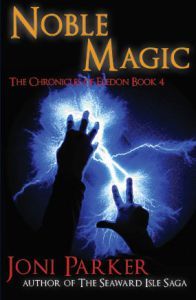 Title: Noble Magic: The Chronicles of Eledon Book Four
Title: Noble Magic: The Chronicles of Eledon Book Four
Author: Joni Parker
Genre: Fantasy
Lady Alexin (Alex) battles a band of mortal wizards known as the Octagon, discovers the mysteries of the five legendary diamond eggs, and finally comes into her true powers gifted to her by her conquests and the gifts of her Titan ancestors. Tasked with the seemingly impossible, Alex must find a way to restore the entry points to Seaward Isle or see its inhabitants face certain destruction as the grid holding Eledon together threatens to fall apart.
Author Bio
 Joni currently lives in Tucson, Arizona, but she was born in Chicago, lived in Japan, graduated high school in Phoenix, and got married in New Jersey. Not only was she married to a career Navy sailor, but she also completed 22 years of active duty service herself. She holds a bachelor’s degree in accounting, an MBA, and a Master of Military Arts and Sciences (MMAS) from the U.S. Army Command and General Staff College. After her husband passed away, she returned to the work in the Department of Homeland Security until she discovered her love of writing. She retired again and has written two series, “The Seaward Isle Saga,” a three-book series, and “The Chronicles of Eledon” with “Spell Breaker,” “The Blue Witch,” “Gossamer,” and “Noble Magic.”
Joni currently lives in Tucson, Arizona, but she was born in Chicago, lived in Japan, graduated high school in Phoenix, and got married in New Jersey. Not only was she married to a career Navy sailor, but she also completed 22 years of active duty service herself. She holds a bachelor’s degree in accounting, an MBA, and a Master of Military Arts and Sciences (MMAS) from the U.S. Army Command and General Staff College. After her husband passed away, she returned to the work in the Department of Homeland Security until she discovered her love of writing. She retired again and has written two series, “The Seaward Isle Saga,” a three-book series, and “The Chronicles of Eledon” with “Spell Breaker,” “The Blue Witch,” “Gossamer,” and “Noble Magic.”
Links
Amazon: Amazon
Giveaway
November 5, 2017
The Adventures of Marisol Holmes: Round-Up
 Are you interested in reading my posts about The Adventures of Marisol Holmes? Well, here’s a round-up, so you can easily find the post you’re looking for.
Are you interested in reading my posts about The Adventures of Marisol Holmes? Well, here’s a round-up, so you can easily find the post you’re looking for.
General
Pinterest Boards
Writing Tough Scenes
A Study in Scarlet vs. A Study in Shifters
All About The Shifters Species
All About Jaguars
All About Leopards
All About Otters
All About Foxes
All About Spiders
Detective Skills and Locations
Paris Catacombs
Invisible Ink
Jefferson Disk
All the posts were cross-posted to this blog too, so you can find them here as well.
November 4, 2017
Book Trailer Blitz Secret Baby, Second Chance
About the Book
 A terrorized young mother and her secret child return home, where a killer awaits…
A terrorized young mother and her secret child return home, where a killer awaits…
She’s alive! Vincente Delaney has finally found his girlfriend, Beth Wade, who disappeared a year and a half ago, alive. But he’s shocked to discover someone with her: their child, a little girl he never knew about! Once upon a time, lone wolf Vincente never expected forever with Beth, but now he must put everything on the line to protect her and their family.
Beth was forced to leave Vincente to protect everything she held dear. But now the threat to her loved ones’ lives has reared its ugly head again. As danger approaches, she and Vincente must delve into her past to cast out the darkness jeopardizing their future.
Author Bio
 JANE GODMAN writes paranormal romance for Harlequin Nocturne and SMP Romance and thrillers for Harlequin Romantic Suspense. She also self publishes her historical and gothic stories.
JANE GODMAN writes paranormal romance for Harlequin Nocturne and SMP Romance and thrillers for Harlequin Romantic Suspense. She also self publishes her historical and gothic stories.
Jane worked in a variety of shops, bars, and offices before settling into a career as a teacher. She was born in Scotland and has lived in Germany, Wales, Malta, South Africa, and England. Home is now the Wirral, a beautiful English peninsula situated between Wales and Liverpool.
Jane still gets the urge to travel, although these days she tends to head for a Spanish beach, or a European city that is steeped in history. Venice, Dubrovnik, and Vienna are among her favorites.
When she isn’t reading or writing romance, Jane enjoys cooking and spending time with her family. She is married to a lovely man, has two grown up children and has recently discovered the joy of becoming a grandparent.
Social Media Links:
Website: janegodmanauthor.com
Twitter
Facebook
Goodreads
Links
Giveaway
Win a copy of the first two books in the series (Covert Kisses and The Soldier’s Seduction)
November 1, 2017
NaNoWriMo Week 1 – Tips and Tricks
 It’s NaNoWriMo! As usually, I’m participating in this event. I’ve been participating for the last five years and although I didn’t always win, I usually do. This year will be extra tough, though, since I’m also starting a new job in November. So, finishing that novel in one month will be extremely difficult, but I like a challenge, so I’m going for it.
It’s NaNoWriMo! As usually, I’m participating in this event. I’ve been participating for the last five years and although I didn’t always win, I usually do. This year will be extra tough, though, since I’m also starting a new job in November. So, finishing that novel in one month will be extremely difficult, but I like a challenge, so I’m going for it.
To help everyone participating in NaNoWriMo (and to help myself too, of course), I’ve put together a handy list of tips and tricks.
Set your goal
Back in the old days, NaNoWriMo meant writing a 50,000 word novel. But now, the rules are slightly more relaxed. 50,000 is still the norm, but if your novel will be 60,000 words, or even 100,000 all of that is allowed. In fact, the more words, the better! My books are usually between 60-80,000 words. I never quite know beforehand how long the book will be, but I do have a general idea, so I have to plan accordingly. Writing 50,000 words in one month is about 1,667 words a day, but if you’re writing a longer novel, then you’ll have to pen down more words a day.
Don’t stop writing when you’ve reached your quota
Surprisingly enough, I see many authors who call it a day once they’ve reached their desired quota for the day, either 1,667 words or more. Don’t! Why would you not continue to hit that next mark, maybe 2,000 words? And if you’re still feeling inspired, nobody or nothing is stopping you from hitting 5,000 words or more in a single day. The quota is there for the days you might not be able to write, the days you might not hit that mark because life happens, or because your inspiration is gone, or God knows what else. But if you’re feeling inspired, keep writing!
Make an outline
I used to just write. I didn’t have an outline, at most I had a vague idea of who my main characters and what I wanted to happen. Now, I always use an outline. You can’t fast draft without one, really. When you’re feeling low on inspiration, when you don’t know how to get from point A to point B and you only have thirty days to finish the book, then you don’t have a lot of time to sit around and wait until inspiration hits you and you find a way to bring your characters to the desired point. That’s where your outline is your lifeline. It will help you find inspiration, come up with ideas, and it will keep the path straight when you don’t know what should happen next, or forgot your end goal, the outline is still there.
Stray from your outline – sometimes
However, although I’m all for outlines, I don’t think you should see it as a Holy Grail. You can derail from the outline from time to time. When you have a marvellous idea, when the characters demand a certain scene, when you find an even better solution to a problem, there’s no reason why you should stick to your outline no matter what. This is part of the creative process, and it’ll make your novel so much better if you just follow the path creativity takes you on, without hanging on to that outline for dear life.
Turn off your inner editor
This is an important tip too. Turn off your inner editor. Even when you’ve caught a typo on the sentence above the last one you just typed, let it go.”Ain’t nobody got time for that” is your new life’s motto when it comes to NaNoWriMo. You don’t have time to go back and edit and re-edit that paragraph until it shines, you have to continue on and write your next paragraph, or you’re not going to make it.
So, there we are, my tips for NaNoWriMo. I’ll have some more NaNoWriMo tips and news for you next week. Meanwhile, for those of you participating in the event, good luck and happy writing!


